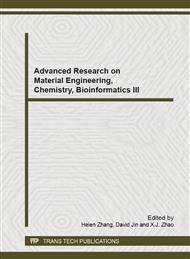p.345
p.349
p.353
p.363
p.367
p.372
p.376
p.384
p.388
Research on Typical Plant Spectral Distinguishable Characteristics by Mann-Whitney U-Test in Wild Duck Lake
Abstract:
Wetlands is a superior way to purify water environment. However monitoring and discriminating among vegetation covers types are critical to understanding population distribution, biogeochemical functioning and the process of wetland recovery. Recently, remote sensing technology has become an important tool to monitor wetland vegetation. Typical wetland plants Bidens Pilosa, Scirpus planiculumis, Phragmites australis and Typha angustifolia in Wild duck wetland were chosen, and Mann-Whitney U-test were used to analyze the spectral characteristics. There were typical vegetation spectral characteristics of dominant species spectral reflectance curve. There are differences among reflective spctral characteristic of species, especially in the green peak and steep reflection. According to the results of Mann-Whitney U-test, the highest frequency bands appeared in702-715732-745747nm, the classification precision of Bidens pilosa , Scirpus planiculumis and Phragmites australis are 100%, 100%, 80%. While It is difficult to distinguish Typha angustifolia from other species effectively using the three spectrum regions.
Info:
Periodical:
Pages:
367-371
Citation:
Online since:
October 2013
Authors:
Keywords:
Price:
Сopyright:
© 2014 Trans Tech Publications Ltd. All Rights Reserved
Share:
Citation:


